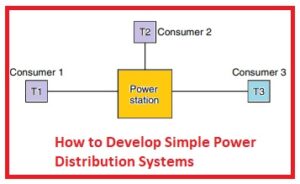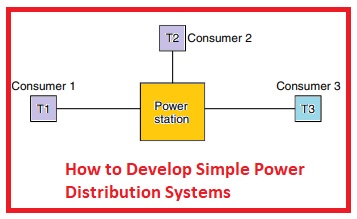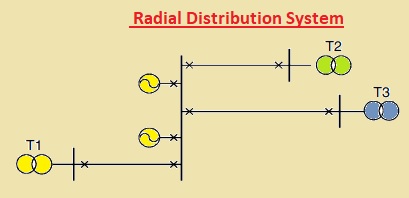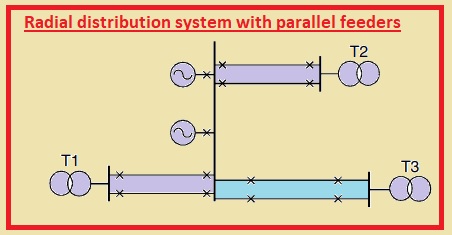 Hello readers welcome to the new post. In this post, we will learn how to Develop Simple Power Distribution Systems. Power distribution is the last phase through which electrical energy is transferred to the load and its provides the electricity getting from transmission lines. The substation installed at the distribution level converts the high volts getting from the transmission system to two kilovolts or thirty-five kilovolts. For voltages, conversion transformers are linked to a system called step down.
Hello readers welcome to the new post. In this post, we will learn how to Develop Simple Power Distribution Systems. Power distribution is the last phase through which electrical energy is transferred to the load and its provides the electricity getting from transmission lines. The substation installed at the distribution level converts the high volts getting from the transmission system to two kilovolts or thirty-five kilovolts. For voltages, conversion transformers are linked to a system called step down.
In this post, we will learn the structure of the distribution power system its component and also discuss different parameters related to it. So let get started.
How to Develop Simple Power Distribution Systems
- To send the power to users end from the generation point there is use of transmission lines with transformers to change the voltage level.
- The combination of transformed and lines for power sending is called radial system
Advantages of radial distribution system
- If there is fault exist at the transformer denoted T2 in the above figure then this transformer will be separate from the system and another transformer will continue their operation
Disadvantages of radial distribution system
- If in certain cases line providing the current to T2 damages then the load link to this transformer will be off till this line is not restored.
- For minimizing this effect there is another system of the transmission line is used that will provide the load to system link to T2 if the conductor is damaged having additional lines.
- It continues to deliver the power to load but is somewhat expensive due to use of an extra line.
Ring main Power distribution system
- In below diagram, you can see the ring main system that is most commonly preferred.
- In this system there is two lines link to users and have different paths to make sure the power delivery if the conductor is damages
Ring main Power distribution system Advantages
- It is helpful to provide the load through two alternative ways if one does not work other deliver the load
- It also saved the cost over the parallel feeder used in above system
Ring main Power distribution system Disadvantages
- In case of fault at the transformer, T1 current is moved to fault side through 2 parallel ways that decrease the impedance from transmission side to fault side and value of fault current is larger than the radial path.
- The value of fault current depends according to the location of the fault
- The protection system for any point should be accurate so fault existing at any point does not disturb other components of fault.
- This category of fault is for feeder failure because lines damage is a very serious fault of the system.
- Different causes can result in this fault like machine hitting, ingress, etc.
- Damaging of transformer is not common fault this types of fault occurs when windings damages.
- Due to overloading conditions, their insulation of windings was also damaged.
- Transformer faults do not disturb the power supply since repairing of transformer is time taking process and more than one transformer is already installed at the distribution point.
- Busbar is the very main point of a system having different points connected at the nodes and different points are coming and going out to deliver the load.
- In case of E H V system where numerous switchgear are linked is an easy process to use an alternative busbar to run numerous loads through different paths.
- While for fewer volts system the use od alternative busbar is not the economical way.
That is all about the How to Develop Simple Power Distribution Systems. Different aspects of distributing system have been discussed with detail. If you have any further query ask in a comment. Thanks for reading have a good day see you in the next post.









